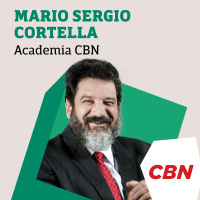Synopsis
HVAC School is the ever growing online source for real training topics for technicians in the Air-conditioning, Heating and Ventilation Fields. In the podcast, we will share recorded training, tech ride alongs, share challenging diagnostic scenarios. All to help make the industry, your company, and your truck a better place to be.
Episodes
-
What is the Best Brand? - Short #233
25/03/2025 Duration: 08minIn this short podcast episode, Bryan answers a listener-submitted question: what is the best brand of equipment for residential new construction? A lot of people have their own personal preferences when it comes to brands, whether that's with equipment, tools, or even cars. However, when it comes to HVAC equipment, there are a lot of factors that come into play, especially as far as local support is concerned. Are the distributors and territory managers accessible? Reliable? Bryan's personal preferences deal a lot with American (or at least North American) manufacturing and the strength of their local support in the Central Florida market. Some manufacturers have excellent base products but weak product lines, and others have weak base products but great specialized equipment. These judgments come from personal experience, and that's especially true of large manufacturers. Bryan recommends taking a measured, slow approach to products you deal with and then choosing the one that works best for your market and
-
Helping Small Owners Succeed w/ WorkHero
20/03/2025 Duration: 33minJoin Bryan Orr and Furman Haynes from WorkHero for a great discussion about how to keep HVAC local and help more small owners succeed. Live from AHR Expo 2025, we get to hear from one of the founders of an exciting new company that is offering expert office management that small HVAC business owners can afford. Bryan also talks with Furman about a survey that HVAC School and WorkHero recently conducted that received over 1,300 responses and yielded fascinating data about the day-to-day challenges of running HVAC businesses. Key topics covered: The challenges small HVAC business owners face with administrative work How the average small business owner spends 15.4 hours per week on non-revenue generating tasks The impact of private equity consolidation on local HVAC businesses How AI and human expertise can work together to support small contractors The importance of preserving craftsmanship and technical excellence in local HVAC businesses Ways to help small business owners focus on growth while reducing admi
-
MeasureQuick Talks with Bert
18/03/2025 Duration: 13minIn this livestream MeasureQuick Talks with Bert. This is an impromptu Talk with industry leaders, including Shelby Breger from Conduit and Joe Medosch from MeasureQuick, about how mobile technology is revolutionizing HVAC diagnostics and training. Featuring special guests discussing how modern tools like MeasureQuick and other diagnostic apps are making it easier for technicians of all experience levels to perform advanced diagnostics and build customer trust. Key Topics: How technicians can leverage mobile technology for better diagnostics Using tablets and phones for real-time HVAC measurements Making technical data accessible and meaningful for customers Bridging the gap between experienced techs and new talent The future of HVAC diagnostics and training How technology can help attract new talent to the trades Recorded live at AHR Expo 2025 with special guests from MeasureQuick and other industry leaders. Whether you're a seasoned pro or new to the trade, learn how modern diagnostic tools can help take y
-
Leak Detection Tech w/ Inficon
13/03/2025 Duration: 30minJoin us as we sit down with Nick from Inficon at AHR Expo 2025 to discuss the latest innovations in Leak Detection Tech. We explore the evolution from halide torches to modern infrared sensors, and get an exclusive look at their newest product - the D-TEK Pro. Key topics covered: The transition from heated diode to infrared sensor technology Deep dive into the Stratus leak detector's cloud hunting and pinpoint modes First look at the new D-TEK Pro with 10x airflow and enhanced sensitivity Discussion of forming gas applications in leak detection Tips for proper leak detector usage and maintenance New accessories for wind protection and insulation penetration Whether you're a seasoned tech or new to the trade, this conversation covers essential knowledge about modern leak detection tools and techniques. Learn how these advances are making leak detection more reliable and efficient for HVAC/R professionals. Find out more at www.inficon.com. Have a question that you want us to answer on the podcast? Submit y
-
Live from AHR with Kalos Team Dre & Elliot
11/03/2025 Duration: 19minJoin Bryan Orr as he goes Live from the AHR Expo 2025 at the Orange County Convention Center with Kalos Services team members Dre and Elliot! They share their first impressions of the massive HVAC industry expo, discuss interesting booth displays, and chat about the latest tools and technology they've spotted on the show floor. Get their perspective on what it's like to attend one of the largest HVAC/R trade shows in the world, featuring over 60,000 industry professionals from around the globe. The team discusses everything from impressive industrial equipment displays to innovative tools like Fieldpiece's new all-in-one leak detector. Special guest appearances and impromptu conversations with other industry professionals make this casual livestream a fun peek into the energy and excitement of AHR Expo 2025! Have a question that you want us to answer on the podcast? Submit your questions at https://www.speakpipe.com/hvacschool. Purchase your tickets or learn more about the 6th Annual HVACR Training Symposiu
-
A Conversation with NAVAC at AHR 2025
07/03/2025 Duration: 46minIn this engaging episode of the HVAC School Podcast, host Bryan sits down with Jesse from NAVAC to dive deep into the evolving landscape of refrigeration technology, focusing primarily on the transition to A2L refrigerants. The conversation offers a refreshingly pragmatic approach to addressing industry concerns about these new, mildly flammable refrigerants, dispelling myths and providing practical insights for HVAC technicians. The discussion begins by addressing the most pressing question for many technicians: Do you need to buy all new tools to work with A2L refrigerants? Jesse from NAVAC provides a nuanced response, emphasizing that while there are currently no regulations mandating new equipment, the company has proactively developed tools that are safety-certified and compatible with the new refrigerant types. They explore the intricacies of safety certifications like UL and CSA, explaining the differences between UL Listed and UL Verified, and highlighting the importance of intrinsically safe equipmen
-
VRF Tech Talk Takeover
06/03/2025 Duration: 53minRoman Baugh and Donald Falese from VRF Tech Talk podcast takeover the HVAC School booth at AHR EXPO 2025. Join them as they talk about the new VRF products being unveiled, water cooled VRF up's and down's and why VRF is such a difficult trade work in. You will not want to miss this one! Highlights include: Daikin's innovative modular air handler for residential applications Hisense's groundbreaking single-phase VRF system with integrated hot water heating New NFC technology for easier system diagnostics and commissioning Updates on vapor injection technology and inverter developments The emergence of air source heat pump chillers Latest innovations from manufacturers like Gree, TCL, Cooper Hunter and more Whether you're a seasoned VRF technician or just getting started with inverter technology, this discussion covers everything from basic principles to cutting-edge developments in the industry. Roman and Donald break down complex technologies into understandable concepts while sharing their firsthand experi
-
Bill Spohn / TruTech Symposium and AHR Recap
04/03/2025 Duration: 18minJoin us for a candid conversation with Bill Spohn from TruTech Tools at AHR Expo 2025! Bill shares exciting news about his planned retirement and transition plan for TruTech Tools, plus gives his insights on this year's 6th Annual HVAC/R Training Symposium where TruTech Tools was the title sponsor. We discuss the unique community atmosphere of both the Symposium and AHR Expo, exploring what makes these events special for the HVAC industry. In this livestream, we dive into: Bill's announcement about transitioning TruTech Tools leadership to his son over the next 3 years A detailed recap of HVAC School Symposium and what made it successful Thoughts on building authentic industry communities and fostering connections Leadership insights and maintaining vision while giving team members agency Perspectives on AHR Expo 2025 and why it matters for HVAC professionals Don't forget to use offer code GETSCHOOLED for a great discount at trutechtools.com! Have a question that you want us to answer on the podcast? Sub
-
UEI at AHR: Carbon Monoxide Safety and Combustion Analysis
03/03/2025 Duration: 46minIn this informative podcast episode, Bryan from HVAC School is joined by Louise Keller, the National Training Manager for UEI Test Instruments, to discuss the critical importance of carbon monoxide safety and proper combustion analysis. The conversation begins with lighthearted banter about the previous night's Tactical Awards ceremony before diving into the serious topic of CO dangers and detection. Louise shares valuable insights about the dangers of carbon monoxide exposure, particularly at lower levels that might not trigger standard home CO alarms. She explains that CO poisoning can mimic many other conditions, including early-onset Alzheimer's, traumatic brain injury, and mobility issues. Bryan adds historical context by recounting how many Victorian-era "ghost stories" and fainting episodes coincided with the introduction of gas lighting in homes, suggesting these phenomena were likely CO poisoning symptoms. He also shares the little-known story of Walt Disney's parents, who tragically died from carbon
-
What's New With Copeland at AHR
28/02/2025 Duration: 35minIn this episode of the HVAC School podcast, Bryan sits down with James and Jeff from Copeland to discuss the evolution and capabilities of Copeland's mobile applications, particularly focusing on the Copeland Mobile app and the new Scout feature. James, who has been with Copeland for 28 years, and Jeff, who works as a trainer, share their extensive knowledge about how these tools can benefit HVAC technicians in the field. The conversation begins with a historical perspective on Copeland's service bulletins, which have been a valuable resource for technicians since the 1980s. The guests explain how these bulletins have evolved from being difficult to access to becoming readily available through the Copeland Mobile app. They discuss how the app has become an essential tool for technicians, allowing them to access critical information about compressors, including operating envelopes, current draw specifications, and troubleshooting guides. The discussion then moves to the exciting new features in the Copeland Mo
-
Good QC, Startup, and Punchout Processes
27/02/2025 Duration: 36minIn this episode, Bryan is joined by guests Jacob and JD to discuss quality control (QC), punch out procedures, and best practices in HVAC installation and service. The conversation delves deep into the various aspects of maintaining high standards in workmanship, from aesthetic considerations to technical performance metrics that affect system longevity. The discussion begins with an exploration of workmanship quality and how to instill pride in work among team members. The guests share insights about the importance of company culture in maintaining high standards, emphasizing that quality control isn't just about catching mistakes but about fostering an environment where everyone takes ownership of their work. They discuss how photo documentation can be a powerful tool for quality control, allowing team members to review work remotely and catch issues that might be missed in the field. The conversation then shifts to the more technical aspects of quality control, particularly focusing on procedures that affe
-
Static Mistakes - Short #232
25/02/2025 Duration: 10minIn this short podcast episode, Bryan covers some common mistakes when measuring static pressure. Static pressure is balloon pressure, not CFM or velocity pressure, but it can be an airflow indicator. The best way to start learning about static pressure is to start measuring total external static pressure. Gas furnaces and heat pumps are different; static pressure is rated at the furnace in the former (not the cased coil, which is additional), and the static pressure includes the coil in a heat pump. The highest static pressure will always be at the blower, but restrictions on either side of the blower will raise static pressure on both sides of the blower. Dirty components can drop the total external static pressure, which is a common point of confusion that can lead to misdiagnosis. You'll want to determine static pressure at the blower and across components. If you want to determine if a cased evaporator coil is clogged, you can measure the static pressure drop across the coil (by measuring below and above
-
Santa Fe Talks Dehumidification at AHR 2025
24/02/2025 Duration: 30minIn this insightful discussion at AHR 2025 in Orlando, Bryan connects with Nikki Krueger from Santa Fe dehumidifiers, exploring the evolution and importance of whole-house dehumidification in modern HVAC systems. Nikki, who has spent 20 years in the indoor air quality industry, shares her journey from a public relations background to becoming deeply involved in the technical and engineering aspects of dehumidification technology. She highlights the groundbreaking work of Ken Gehring, who invented whole-house ventilating dehumidifiers in the mid-1990s and continues to be actively involved in the industry at 84 years old. The conversation delves into the changing landscape of home construction and its impact on dehumidification needs. As houses become tighter due to building codes and energy efficiency requirements, the relationship between air conditioning and dehumidification has become more complex. They discuss how modern, high-efficiency AC systems often struggle with effective dehumidification due to their
-
Catching Up with Fieldpiece and Refrigeration Technologies at AHR
21/02/2025 Duration: 01h10minIn this special episode from the 2025 AHR Expo, Bryan brings us two fascinating conversations with industry leaders who are shaping the future of HVAC technology and tools. The episode kicks off with Tony Gonzalez from Fieldpiece celebrating their 35th anniversary. Tony shares his remarkable journey from packaging meters in the warehouse to his current leadership role, providing unique insights into the company's evolution. The discussion explores Fieldpiece's pioneering role in developing HVAC-specific testing equipment, particularly highlighting their groundbreaking HS26 meter that filled a crucial gap in the industry when no other company was creating specialized meters for HVAC technicians. The conversation with Tony delves deep into the technical aspects of modern HVAC work, particularly focusing on combustion analysis and its three fundamental pillars: safety, efficiency, and consistency. Tony explains how Fieldpiece's JobLink system has revolutionized the way technicians document their work and communi
-
From Plumber to HVAC Owner w/ Manly Arnanson
20/02/2025 Duration: 45minIn this episode, Bryan speaks with Manly, an HVAC professional from Manitoba, Canada, about his journey from working in his family's plumbing business to running his own HVAC company. Manly shares his experiences working in extreme cold weather conditions, where temperatures can drop to -30°C (-22°F), and discusses the unique challenges and emergency response strategies required in such a heating-dominated market. The conversation delves deep into the ethical aspects of running an HVAC business, with both Bryan and Manly sharing their Christian perspectives on business ethics, customer service, and professional integrity. They discuss the importance of honest communication with customers, admitting mistakes, and making decisions based on customers' needs rather than purely financial motivations. Manly emphasizes how his faith influences his business practices and decision-making, particularly when advising customers about repairs versus replacements. The discussion also explores the importance of continuous l
-
EER in the Field - Short #231
18/02/2025 Duration: 12minIn this short podcast episode, Bryan talks about EER (Energy Efficiency Ratio) and SEER (Seasonal Energy Efficiency Ratio) and how to calculate EER in the field. EER and SEER are ratings that we often see on equipment (as are SEER2 and EER2) based on a ratio of an output to an input. Whereas coefficient of performance (COP) is a direct ratio of watts out to watts in, EER and SEER account for BTUs and watts. EER and SEER indicate the cooling capacity (in BTUs) we get from the watts we put in. The ratio changes based on field conditions, and EER2 and SEER2 have more realistic test conditions than EER and SEER (the static pressure for systems rated below 65,000 BTUs per hour was 0.1"wc for EER and SEER, and it is now 0.5"wc for EER2 and SEER2, which is much closer to average field conditions). To determine EER, you have to figure out BTU production and stack it against your wattage. You'll need to know your delta enthalpy (delta H), multiply it by the CFM, and then multiply the product of those by 4.5 to get you
-
Heat Pumps / Comfort and Electrification w/ Copeland
14/02/2025 Duration: 31minIn this informative episode, Josh Souders from Copeland joins Bryan to dive deep into heat pump technology, discussing everything from basic operations to advanced features in cold climate applications. The conversation begins with a fundamental explanation of how heat pumps work, describing them as essentially air conditioners with a reversing valve that allows them to provide both heating and cooling. Josh explains the thermodynamic principles that enable heat pumps to extract heat from cold outdoor air and transfer it indoors, achieving coefficients of performance (COP) ranging from 1.5 to 3, making them significantly more efficient than traditional electric resistance heating. The discussion moves into the broader context of electrification and decarbonization, explaining how heat pumps fit into these environmental initiatives. Josh details how modern cold climate heat pumps have evolved significantly from earlier generations, particularly through the Department of Energy's Cold Climate Heat Pump Challeng
-
Efficiency and Production on Larger Projects
13/02/2025 Duration: 48minIn this podcast episode, Bryan, Jacob, and JD provide an in-depth look at a significant HVAC project that tested their team's ability to adapt, learn, and improve. The discussion centers on a large-scale apartment building project that presented numerous challenges in project management, team dynamics, and installation processes. What began as a chaotic and inefficient workflow ultimately transformed into a more streamlined and collaborative effort through careful analysis and strategic adjustments. The team candidly discusses their initial struggles with project management, particularly around materials handling, piecework compensation, and team coordination. They highlight the importance of moving from an individual-focused approach to an assembly-line mentality, which dramatically improved both productivity and team morale. The podcast reveals the critical nature of communication, ownership, and consistent processes in managing large-scale construction projects. A key theme throughout the discussion is the
-
Q&A - Circuit Board Troubleshooting - Short #230
11/02/2025 Duration: 10minIn this short Q&A podcast episode, Bryan answers a listener-submitted question about circuit board troubleshooting: is there a quick way to learn how to check circuit boards, and if so, where are those resources? A circuit board is a bunch of components put together on a printed circuit board (PCB). There isn't a lot of helpful universal information about circuit boards available, as they vary quite a bit by model and manufacturer. However, many of the basic components will be the same across circuit boards: microprocessors, diodes, relays, capacitors, and transformers. If you understand what these are on their own, that will help you understand what they do in circuit boards. You mostly need to know the inputs, outputs, and sequence of operation of a circuit board to diagnose it. The sequence of operation tells you when certain things are supposed to happen, such as in an integrated furnace control (IFC); the flame rectification process is a classic example. If the flame can be proven, the operation con
-
Are you using AI to Troubleshoot w/ Refrigeration Mentor
06/02/2025 Duration: 37minIn this episode of the HVAC School Podcast, Trevor Matthews and Bryan dive deep into the transformative potential of artificial intelligence (AI) in the refrigeration and HVAC industries. They explore how AI is not a new concept in their field, discussing how manufacturers like Copeland, Sporlan, and Danfoss have long incorporated AI-driven tools and repositories of information into their applications. The conversation goes beyond simple technological novelty, positioning AI as a powerful learning and troubleshooting assistant for technicians. The discussion highlights AI's role as a supportive tool rather than a job replacement. Trevor emphasizes that AI cannot physically perform trade-specific tasks like climbing ladders or brazing pipes, but it can provide invaluable guidance, explain complex procedures, and help technicians quickly access specialized knowledge. Particularly beneficial for less experienced technicians working late-night shifts or challenging service calls, AI can serve as an instant refere
































